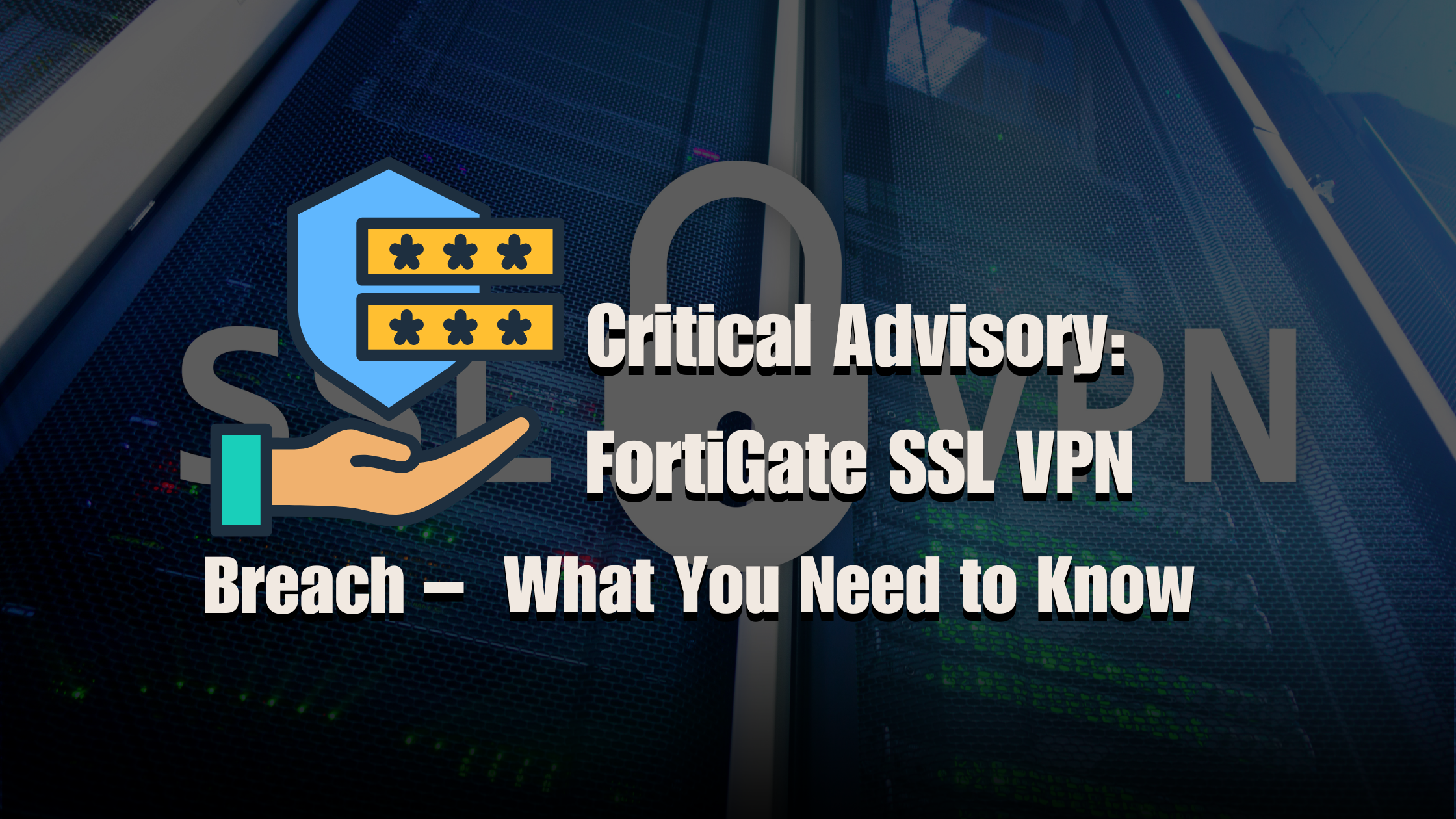Critical Advisory: FortiGate SSL VPN Breach – What You Need to Know
In an alarming development for cybersecurity professionals and businesses, Fortinet's FortiGate SSL VPN has suffered a significant security breach, potentially exposing thousands of networks worldwide. If your organization relies on Fortinet VPN solutions, immediate action is required to mitigate risks and secure sensitive data.
Understanding the Breach
Fortinet, a leading cybersecurity solutions provider, recently disclosed a critical vulnerability in its FortiGate SSL VPN, allowing unauthorized attackers to exploit the system. Hackers are actively leveraging this flaw to gain remote access to corporate networks, potentially compromising confidential information.
Vulnerability Details
- Affected Product: FortiGate SSL VPN
- Type of Exploit: Authentication bypass and remote code execution
- Severity Level: Critical (CVSS Score: 9.8/10)
- Impact: Unauthorized access, data breach, lateral movement within networks
- Exploited In The Wild?: Yes, multiple instances of exploitation reported
According to cybersecurity analysts, attackers are using sophisticated techniques to bypass authentication mechanisms and execute arbitrary code remotely. This allows them to establish persistent access, steal credentials, and move laterally within enterprise environments.
Who is Affected?
Organizations using unpatched versions of FortiGate SSL VPN are at high risk. Sectors particularly vulnerable include:
- Financial institutions
- Healthcare organizations
- Government agencies
- IT service providers
- Educational institutions
Given the widespread adoption of Fortinet’s solutions, the potential damage could be severe if corrective actions are not taken immediately.
How Are Attackers Exploiting the Vulnerability?
Hackers have been found using automated scripts to scan the internet for vulnerable instances of FortiGate SSL VPN. Once identified, they:
- Bypass authentication using known exploits
- Inject malicious payloads to gain control over the VPN gateway
- Establish persistence for long-term access
- Exfiltrate sensitive data from corporate environments
- Deploy ransomware or other malware to cripple IT infrastructures
Immediate Actions to Take
If you are using FortiGate SSL VPN, here’s what you should do immediately:
1. Apply Security Patches
Fortinet has released critical patches to address the vulnerability. Update to the latest firmware version immediately.
2. Disable Unnecessary VPN Access
If remote access is not essential, consider disabling VPN services until the vulnerability is fully mitigated.
3. Monitor Network Traffic
Check for unusual login attempts, unauthorized IP addresses, and suspicious activity that could indicate a breach.
4. Implement Multi-Factor Authentication (MFA)
Enforcing MFA can help prevent unauthorized access, even if credentials are compromised.
5. Change Credentials and Certificates
If you suspect any compromise, reset all VPN-related credentials and revoke any potentially exposed certificates.
6. Conduct a Security Audit
Review logs and conduct a full security assessment to identify any signs of intrusion or ongoing attacks.
Long-Term Security Measures
While addressing the immediate breach is crucial, organizations should adopt long-term security strategies, including:
- Zero Trust Architecture (ZTA) to minimize attack surfaces
- Regular penetration testing to identify weaknesses
- AI-driven threat detection to spot anomalies in network traffic
- Employee cybersecurity awareness training to prevent social engineering attacks
Final Thoughts
The FortiGate SSL VPN breach serves as yet another reminder that cybersecurity is an ongoing battle. Organizations must stay proactive in identifying and mitigating vulnerabilities before malicious actors exploit them. If your enterprise depends on Fortinet’s VPN solutions, take immediate action to protect your infrastructure, data, and users.
Stay updated with security advisories and always prioritize cybersecurity hygiene to minimize risks in an ever-evolving digital landscape.


